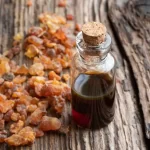It’s Ear Infection Season! 5 Ways to Naturally Treat and Prevent It This Fall and Winter
As the seasons transition from the vibrant warmth of summer to the cool embrace of autumn and winter, many of us find ourselves bracing for the unwelcome arrival of ear infections. While we often associate ear infections with the winter chill, they can be equally prevalent in the crisp days of fall. These troublesome ailments tend to target not only children but also adults, casting a shadow of discomfort during these colder months. As we huddle indoors more frequently, the bacteria and viruses that thrive in close quarters seize the opportunity to make our ears their temporary residence.
Ear infections, with their trademark earaches, temporary hearing impairments, ringing sensations, and occasional bouts of vertigo, tend to strike when bacteria and viruses breach the sanctuary of the middle ear. Often, these intruders hitch a ride on the coattails of another illness, such as a common cold or flu. While antibiotics are commonly prescribed for ear infections, their overuse contributes to antibiotic resistance over time. They also come with side effects like nausea or diarrhea and often fail to address the root causes that foster ear infection development.
Understanding Ear Infections
An ear infection occurs when unwelcome visitors, such as viruses or bacteria, infiltrate the middle ear, a cavity that lies snugly between the eardrum and the inner ear. Infiltration by these germs leads to inflammation and a buildup of fluid behind the eardrum. It can come from various sources.
During a cold or flu, congestion and swelling of the Eustachian tubes can trap fluid and germs within the middle ear. When congestion sets in, it creates a fertile ground for bacteria and viruses to propagate.
Childhood illnesses like strep throat or conditions affecting the respiratory system, sinuses, or nasal passages can all facilitate the spread of infection to the middle ear.
Food allergies and exposure to irritants, such as smoke, may inflame the linings of the middle ear.
A perforated eardrum resulting from injury can provide an entry point for germs.
Once these intruders infiltrate and infect the middle ear, the body’s immune response triggers the production of fluid and pus, resulting in excruciating pressure. In severe cases, the eardrum can protrude outward or even rupture. Common triggers leading up to ear infections during the autumn and winter months include exposure to germs as children return to school, the dry indoor air that promotes ideal breeding conditions for bacteria, seasonal allergies, and the improper treatment of preceding colds, creating a hospitable environment for bacterial growth.
5 Natural Ways to Treat Ear Infections and Shield Against Autumn and Winter Woes
In the quest to naturally treat ear infections during the fall and winter, simplicity often reigns supreme. Here are five evidence-backed strategies to alleviate discomfort and promote healing:
1. Embrace the Warmth
One of the most straightforward yet effective natural remedies involves the application of gentle warmth to the afflicted ear. Begin by immersing a clean washcloth in warm water, ensuring you wring out any excess moisture. Then, delicately drape it over the aching ear. The infusion of moist warmth serves a dual purpose: it draws out fluid and infection while simultaneously providing solace to inflamed lymph nodes.
For optimal results, employ this warm compress for 10-15 minutes, 2-3 times per day. By doing so, you can reduce swelling, numb pain, and support the vital process of drainage.
2. Harness the Power of Herbal Ear Drops
Ear drops enriched with herbs offer a potent tool in the battle against infection. Mullein, a remarkable herb, stands as a natural bactericide and pain alleviator. Additionally, garlic oil boasts formidable antimicrobial and antibiotic properties. The soothing relief of olive oil and St. John’s wort completes this herbal arsenal.
To create your own herbal eardrops, blend several drops of oil infused with herbs and carefully apply them to the outer ear and ear canal. Administer this remedy 2-3 times daily to assist in clearing up infection and mitigating swelling.
3. Embrace Garlic’s Healing Touch
Garlic, renowned for its infection-fighting prowess, features compounds like allicin that are both powerful and effective. Garlic contains a powerhouse compound known as allicin, which possesses formidable antibacterial and antiviral properties.
You can prepare a simple garlic oil infusion by gently heating olive oil and adding crushed garlic cloves. After allowing the mixture to cool, strain out the garlic solids, leaving behind the garlic-infused oil. Applying a few drops of this oil to the outer ear can offer soothing comfort and potentially help combat the infection.
4. Stay Hydrated, Stay Healthy
The path to recovery from any infection begins with proper hydration. Embrace a fluid-rich regimen that includes water, herbal tea, broths, and diluted fresh juices. These liquids serve the crucial role of thinning out mucus drainage, preventing dehydration, and accelerating the healing process. In your pursuit of wellness, be sure to steer clear of dairy products, which can exacerbate phlegm and mucus production. Aim for 8-10 glasses of fluids each day to stay adequately hydrated.
5. Massage with Warm Oil
To alleviate the discomfort of earaches, consider the soothing power of warm oil. Oils such as olive, sesame, and mustard seed bring anti-inflammatory properties to the table. Gently heat the oil before commencing a delicate massage around the outer ear, jawline, and neck area. This can provide respite from earache pain. For additional relief, place 2-3 drops of warmed oil inside the ear canal itself. Ensure the use of high-quality, pure oil to maximize the benefits of this natural remedy.
While these natural approaches often resolve minor ear infections, it is crucial to consult a healthcare professional if an earache persists beyond 2-3 days or if symptoms worsen. More advanced cases may necessitate medical treatment. By judiciously combining these methods, you can promote healing and alleviate symptoms when ear infections make their unwelcome appearance during the autumn and winter seasons.
Preventing Ear Infections: Proactive Measures for Autumn and Winter
While treating ear infections naturally is valuable, preventing them is even more advantageous. Here are some proactive measures you can take to reduce the risk of ear infections during the autumn and winter months:
Maintain Good Ear Hygiene: Gently clean your ears with a washcloth or tissue, but avoid inserting cotton swabs or any objects into the ear canal. These can push earwax deeper and potentially create a conducive environment for infection.
Bundle Up: Keep your ears covered and warm in cold and windy weather. Use earmuffs, hats, or scarves to shield your ears from the chilly elements.
Practice Good Hand Hygiene: Frequent handwashing helps minimize the spread of germs that can lead to upper respiratory infections, which often precede ear infections.
Avoid Smoking and Secondhand Smoke: Smoking and exposure to secondhand smoke can irritate the respiratory tract and make you more susceptible to infections. If you smoke, consider quitting, and avoid exposure to smoke whenever possible.
Manage Allergies: If you have seasonal allergies, seek treatment to manage your symptoms. Allergic reactions can lead to congestion, which can affect the Eustachian tubes and contribute to ear infections.
Maintain Humidity: Use a humidifier in your home during the dry months of autumn and winter. Adequate humidity helps keep the mucous membranes in your respiratory tract healthy and can reduce the risk of infections.
A Season of Ear Health
With autumn and winter’s arrival, prioritizing ear health is essential. Whether it’s applying warm compresses or harnessing the healing power of garlic, these approaches can provide relief when needed. However, the real key to enjoying these seasons without ear infections is prevention. By adopting good ear hygiene, staying warm, practicing hand hygiene, managing allergies, and taking other preventive measures, you can significantly reduce your risk of ear infections. This season, embrace these strategies and savor the beauty of autumn and winter with the comfort of healthy ears.
The post It’s Ear Infection Season! 5 Ways to Naturally Treat and Prevent It This Fall and Winter appeared first on Healthy Holistic Living.










